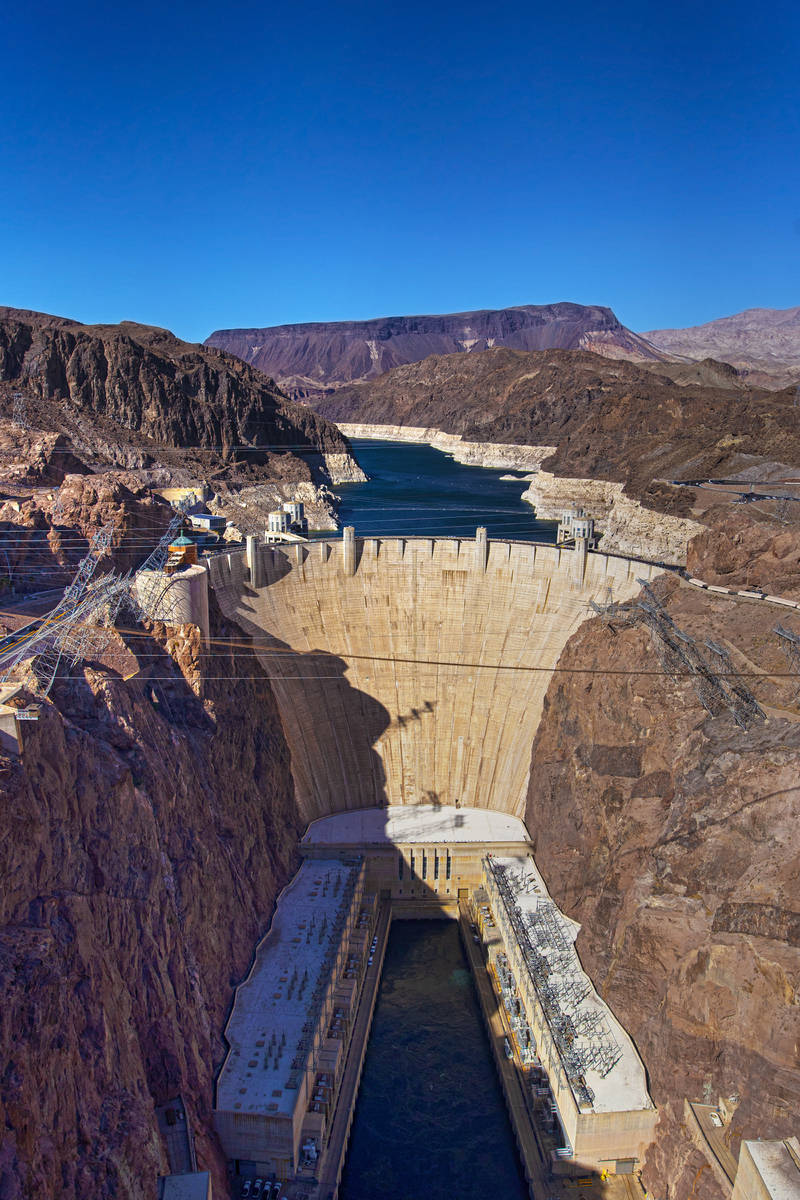Commentary: Water conservation remains key to sustainable future
The last time Lake Mead was at 35 percent capacity, it was being filled in the 1930s. While ongoing drought and climate change have created an uncomfortable reality and stressed water supplies, the Southern Nevada Water Authority has been preparing for this for almost 20 years. Now, with a federal shortage declaration just weeks away, our community’s commitment to conserving our limited water resources takes on a new urgency as we strive to protect the vibrancy of the place that more than two million of us call home.
The onset of this historic drought began in 2002, at a time when Southern Nevada was using more than its legal entitlement of 300,000 acre-feet of Colorado River water. On an unsustainable trajectory, our community shifted, embracing and implementing the most progressive and comprehensive conservation program in the nation, which included seasonal watering restrictions, golf course water budgets, a turf replacement program, water waste penalties and changes to municipal codes that significantly reduced the impact of new development on our water supply.
Thanks to this community’s support, those efforts worked. Last year, Southern Nevada used 23 percent less Colorado River water than we did in 2002, even while adding nearly 800,000 new residents and maintaining a prosperous and robust economy during that same time. All while using less water. In fact, water use on a per-person basis has dropped by 47 percent since 2002. A remarkable achievement not duplicated by any other community in the West.
But conservation is a journey — not a destination — and our community’s conservation journey continues.
Based on Colorado River projections from the U.S. Bureau of Reclamation, there is near certainty that a water shortage will be declared by the federal government in August. This will reduce Nevada’s annual Colorado River allocation by 13,000 acre-feet next year — and that is in addition to the 8,000 acre-foot reduction we already take under provisions of the Drought Contingency Plan to help bolster Lake Mead.
In total, our local water supply will be cut by 21,000 acre-feet next year — enough to serve about 45,000 valley households for a year. Should Lake Mead’s water level continue to decline, additional shortage declarations will further reduce our Colorado River allocation.
Last spring, the water authority completed a low lake level pumping station on time and under budget. This important infrastructure project — teamed with Intake No. 3 at the lake’s bottom — ensures access to our water supply even if Lake Mead drops too low to pass water through Hoover Dam for power generation or downstream demands.
With this infrastructure in place, we are pursuing a new partnership with the Metropolitan Water District of Southern California to develop a water recycling system that will safely and sustainably reuse treated wastewater from Los Angeles that is currently discharged to the Pacific Ocean. This partnership contemplates the authority’s financial participation to receive a share of water from the project, which would be exchanged for an equal share of California’s water allocation and accessed from Lake Mead. This will increase our community’s water supplies and provide additional water resources for the future.
Recently, the Legislature passed Assembly Bill 356, prohibiting the use of Colorado River water to irrigate nearly 4,000 acres of unused, decorative grass in our valley by the end of 2026. This is grass in medians and roundabouts; commercial properties and HOA entrances; and bordering parking lots and streets. It’s grass no one ever uses, yet it consumes about 10 percent of our water supply annually — more than the amount consumed by the entire Strip. Replacing this grass with drip-irrigated trees and plants will save nearly 30,000 acre-feet of water and help our community manage Colorado River shortage conditions.
While the water authority continues to invest in the partnerships and programs necessary to protect our water supply, we need the community to step up its conservation commitment by adhering to the mandatory seasonal watering restrictions, replacing grass with water-smart landscapes, stopping water waste and participating in our conservation incentive programs. These efforts are essential to our community’s long-term viability and economic success. And they work.
Southern Nevada has the ability to further increase its water efficiency, but it is incumbent on every resident and business to use these water conservation tools to protect the investments we have all made in this community. And, while the water authority’s 50-year water resources plan accounts for extended Colorado River shortages and provides for long-term water security, it also requires that we all conserve water at greater levels than we currently do.
Southern Nevada has the capability, the obligation and the need to be the most water-efficient community in the nation. It is the responsibility of every Southern Nevadan living and working here to help achieve that goal for our future sustainability.
This commentary originally appeared in the Las Vegas Review-Journal.
John Entsminger is general manager of the Southern Nevada Water Authority.




